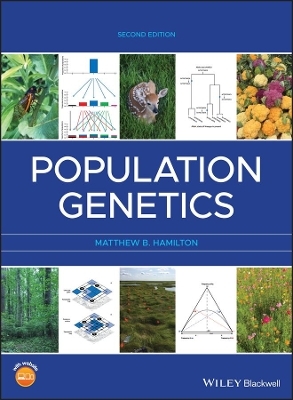
Convergent Evolution on Earth
Lessons for the Search for Extraterrestrial Life
Seiten
2019
MIT Press (Verlag)
978-0-262-04273-4 (ISBN)
MIT Press (Verlag)
978-0-262-04273-4 (ISBN)
An analysis of patterns of convergent evolution on Earth that suggests where we might look for similar convergent forms on other planets.
Why does a sea lily look like a palm tree? And why is a sea lily called a "lily" when it is a marine animal and not a plant? Many marine animals bear a noticeable similarity in form to land-dwelling plants. And yet these marine animal forms evolved in the oceans first; land plants independently and convergently evolved similar forms much later in geologic time. In this book, George McGhee analyzes patterns of convergent evolution on Earth and argues that these patterns offer lessons for the search for life elsewhere in the universe.
Our Earth is a water world; 71 percent of the earth's surface is covered by water. The fossil record shows that multicellular life on dry land is a new phenomenon; for the vast majority of the earth's history-3,500 million years of its 4,560 million years of existence-complex life existed only in the oceans. Explaining that convergent biological evolution occurs because of limited evolutionary pathways, McGhee examines examples of convergent evolution in forms of feeding, immobility and mobility, defense, and organ systems. McGhee suggests that the patterns of convergent evolution that we see in our own water world indicate the potential for similar convergent forms in other water worlds. We should search for extraterrestrial life on water worlds, and for technological life on water worlds with continental landmasses.
Why does a sea lily look like a palm tree? And why is a sea lily called a "lily" when it is a marine animal and not a plant? Many marine animals bear a noticeable similarity in form to land-dwelling plants. And yet these marine animal forms evolved in the oceans first; land plants independently and convergently evolved similar forms much later in geologic time. In this book, George McGhee analyzes patterns of convergent evolution on Earth and argues that these patterns offer lessons for the search for life elsewhere in the universe.
Our Earth is a water world; 71 percent of the earth's surface is covered by water. The fossil record shows that multicellular life on dry land is a new phenomenon; for the vast majority of the earth's history-3,500 million years of its 4,560 million years of existence-complex life existed only in the oceans. Explaining that convergent biological evolution occurs because of limited evolutionary pathways, McGhee examines examples of convergent evolution in forms of feeding, immobility and mobility, defense, and organ systems. McGhee suggests that the patterns of convergent evolution that we see in our own water world indicate the potential for similar convergent forms in other water worlds. We should search for extraterrestrial life on water worlds, and for technological life on water worlds with continental landmasses.
George McGhee is Distinguished Professor of Paleobiology in the Department of Earth and Planetary Sciences at Rutgers University and a Member of the Konrad Lorenz Institute for Evolution and Cognition Research in Klosterneuburg, Austria. He is the author of Convergent Evolution: Limited Forms Most Beautiful (MIT Press)
| Erscheinungsdatum | 01.10.2019 |
|---|---|
| Reihe/Serie | Vienna Series in Theoretical Biology |
| Zusatzinfo | 20 b&w illus.; 40 Illustrations |
| Sprache | englisch |
| Maße | 152 x 229 mm |
| Themenwelt | Naturwissenschaften ► Biologie ► Evolution |
| ISBN-10 | 0-262-04273-8 / 0262042738 |
| ISBN-13 | 978-0-262-04273-4 / 9780262042734 |
| Zustand | Neuware |
| Informationen gemäß Produktsicherheitsverordnung (GPSR) | |
| Haben Sie eine Frage zum Produkt? |
Mehr entdecken
aus dem Bereich
aus dem Bereich
Komplette Neuübersetzung. Mit einem Nachwort von Josef H. Reichholf.
Buch | Hardcover (2018)
Klett-Cotta (Verlag)
48,00 €


